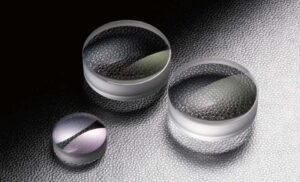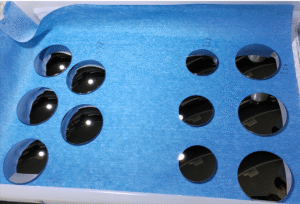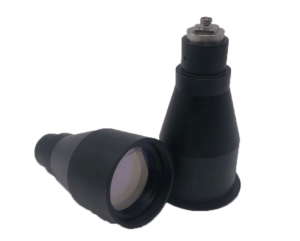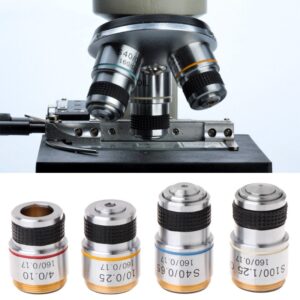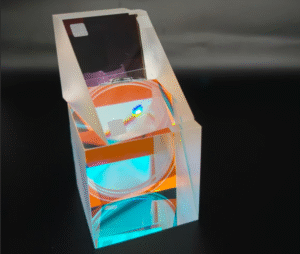Concave vs Convex Lens: Understanding the Basics
Lenses are essential components in optical systems. Among them, concave and convex lenses are the most commonly used in various scientific, industrial, and everyday applications. In this article, we will explore the differences between concave and convex lenses, their properties, uses, and related types such as double convex lens, plano concave lens, and more.
1. What is a Lens in Physics?
Lens physics definition:
A lens is a transparent optical component made of glass or other materials that refracts (bends) light rays. Lenses are categorized based on the shape of their surfaces and how they affect light.
2. Convex Lens vs Concave Lens – A Quick Comparison
| Feature | Convex Lens | Concave Lens |
|---|---|---|
| Shape | Outward-curved (bulging out) | Inward-curved (curved inward) |
| Lens Type | Converging lens | Diverging lens |
| Light Behavior | Focuses light to a point | Spreads light out |
| Focal Length | Positive | Negative |
| Image Formation | Real or virtual | Always virtual |
| Common Applications | Cameras, magnifiers, projectors | Glasses for myopia, peepholes |
| Examples | Double convex, plano convex | Double concave, plano concave |
3. Properties of Convex Lens
- Converging lens: Brings parallel rays to a focal point.
- Positive focal length.
- Can form real or virtual images depending on object distance.
- Commonly used in microscopes, cameras, and magnifying glasses.
✅ Double Convex Lens
A double convex lens has both surfaces curved outward. It’s widely used in imaging applications.
✅ Plano Convex Lens
One surface is flat, the other convex. Used in laser systems and collimators.
4. Properties of Concave Lens
- Diverging lens: Spreads parallel rays outward.
- Negative focal length.
- Always forms virtual, upright, and diminished images.
- Used in eyeglasses for myopia (nearsightedness) and laser beam expanders.
✅ Double Concave Lens
Both surfaces are concave. Suitable for diverging light in optical systems.
✅ Plano Concave Lens
One side is flat, the other inward-curved. Used to expand light beams or correct aberrations.
5. Types of Lenses in Physics
| Type of Lens | Description | Applications |
|---|---|---|
| Double Convex | Both sides convex | Imaging systems, magnifiers |
| Plano Convex | One flat, one convex | Collimating beams |
| Double Concave | Both sides concave | Beam diverging, optical correctors |
| Plano Concave | One flat, one concave | Laser expansion, aberration correction |
6. Uses of Convex and Concave Lenses
🔷 Uses of Convex Lens
- Cameras – for focusing light onto sensors.
- Projectors – to enlarge and project images.
- Magnifying glasses – for enlarging small objects.
- Human eye correction – for hyperopia (farsightedness).
🔶 Uses of Concave Lens
- Eyeglasses – for myopia correction.
- Peepholes – to provide a wide field of view.
- Laser systems – for beam shaping or expansion.
- Telescope eyepieces – for reducing optical distortion.
7. Concave Lens Image Formation
When parallel light rays pass through a concave lens, they diverge. The image is:
- Virtual
- Upright
- Reduced in size
- Formed on the same side as the object

8. Double Convex Lens Formula
The lens formula is used to calculate the relationship between focal length (f), object distance (u), and image distance (v): 1f=1v−1u\frac{1}{f} = \frac{1}{v} – \frac{1}{u}f1=v1−u1
- f is positive for convex lenses
- f is negative for concave lenses
9. Concave and Convex Curve Design in Optics
In optical manufacturing, the curvature of a lens affects its focal length, magnification, and aberration correction. At Bote Optical, we offer custom curved lenses including concave, convex, and aspheric designs, tailored for various industrial and scientific needs.
10. Why Choose Bote for Custom Lenses?
At Bote, we provide:
- High-precision custom concave and convex lenses
- Full in-house cold processing and testing
- Coating services (BBAR, DLC, etc.)
- Support for infrared materials like germanium, silicon, sapphire
👉 Visit our product page to learn more about our lens offerings.
Frequently Asked Questions (FAQs)
❓ What is the difference between convex and concave lenses?
Convex lenses converge light, while concave lenses diverge light. Convex lenses can form real images; concave lenses always form virtual images.
❓ What are the properties of a concave lens?
- Diverging light rays
- Negative focal length
- Always produces upright, virtual images
❓ What is a double convex lens used for?
Double convex lenses are used in applications that require light convergence, such as microscopes, cameras, and projectors.
❓ Can a concave lens form a real image?
No. A concave lens always forms a virtual image.
❓ What are the main types of concave lenses?
- Plano concave lens
- Double concave lens
- Meniscus concave lens
Conclusion
Understanding the difference between concave and convex lenses is fundamental in optics. From their physical shape to how they affect light, each lens type has its unique properties and applications. Whether you need a custom plano concave lens or a high-precision double convex lens, Bote is your trusted optical partner.

